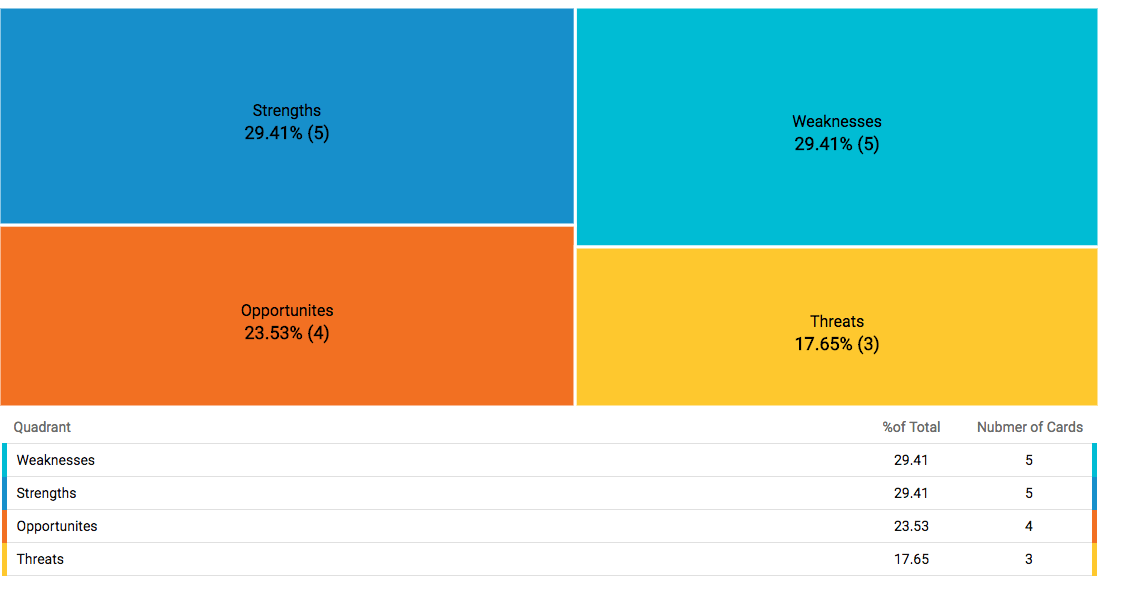Let’s face it, we all have our strengths and weaknesses in life.
Just because you’re exceptional at product development, doesn’t mean that you’ll be any good at dealing with the priority matrix in your business, or designing marketing materials. One of the simplest ways to bridge the gap between your talents, and the areas where you struggle most, is to perform a personal “SWOT” analysis.
SWOT (Strengths, weaknesses, opportunities, and threats) analysis is often a strategy that companies use to formulate a strategy for success. If you understand your strengths and weaknesses, and the hurdles that you’ll have to overcome to meet your goals, then you’re more likely to come up with a good plan for the future.
Ideally, it’s a good idea to begin your SWOT analysis with a goal in mind. That way, you can consider your strengths and weaknesses in context with your ambitions, and make decisions about how you might need to change or evolve to address potential threats.
So, how do you perform a SWOT analysis on yourself?

A lot of people assume that listing their strengths will be a simple process. However, unless you’re very aware of your own skills, you might struggle to see yourself as a competitive product in the marketplace. Try to sit down and think carefully about what makes you different. Whether it’s your ability to understand and adapt to your own specific quadrant, or your training in a particular business area, there should be plenty of things about you that set you apart from the crowd.
Try asking some of the following questions to guide your SWOT analysis:
What advantages do I have over other people in my industry? (For instance, certifications, education, connections, or skills)
What can you accomplish better than anyone else? (Maybe you’re good at making people see your side of the story, for instance. Or, you could be exceptionally good at product prioritization).
What personal resources can you access? (For example, a tech employee with a network full of technology experts is more useful than someone who’s fresh to the industry)
If you struggle to find your strengths yourself, you could always ask your employer, coworkers, and family members to tell you what they think your strengths are. Knowing what makes you special is one of the most important elements of any SWOT analysis.
Evaluating your weaknesses with a SWOT analysis isn’t an excuse to start beating yourself up over the things you might not be able to do as well as someone else. As I said at the beginning of this post, everyone has their own unique skills. Ideally, examining your weaknesses in a SWOT analysis will help you to determine areas where you have room to grow in your career. For instance, if you don’t understand a particular aspect of product development, then you may need to build on that area before you apply for a job in product management.
To get a better look at your weaknesses, ask yourself:

One of the most inspiring aspects of SWOT analysis, is the fact that you can explore the opportunities that are available in your space, and think about what you can do to evolve as a professional. For instance, if you’re the kind of person that struggles with product modeling, you could consider using tools that make it easier for you to strategically build new solutions with your entire team. Recognizing the need for new resources and training can be an opportunity in itself.
Try asking yourself the following questions as part of your SWOT analysis:
Finally, threats can come in a wide range of different shapes and sizes. Your skills might be growing outdated in your industry, or you may need to evolve your talent if you want to stay ahead of the game. Being able to acknowledge your weaknesses, and accentuate your strengths to take advantage of new opportunities, could make it easier for you to overcome threats.
To provide an honest insight into your current situation, make sure that you think carefully about the threats you’re facing as an individual, and how you can respond to them. This might include asking some of the following questions:
A lot of professionals overlook the value of SWOT analysis, because they think of it as a tool exclusively for large business entities. However, SWOT analysis can be the perfect way to identify areas where you need to grow as a professional, and a key member of your company. Throughout my career, I’ve used SWOT analysis many times to help me figure out how I need to adapt to be more applicable for a new job or position.
When you understand your weaknesses, and the threats you need to overcome, you can begin to take steps to make yourself a more powerful candidate in your profession. For instance, if you’re struggling with product development, and the priority matrix, but you want to excel within a sales and marketing position, then you might think about making the most out of new technology.
With Strategic Quadrant, you can take an actionable approach to SWOT analysis, by finding ways to enhance and support your skills. From supporting product prioritization, to business capability modeling, new technology like Strategic Quadrant can help professionals highlight their strengths, and minimize their weaknesses in the competitive business landscape. Why not find out how it can help you evolve?